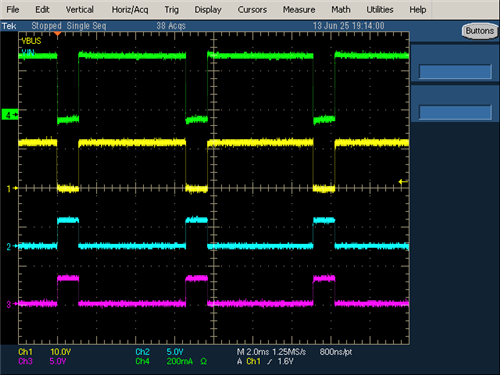Tool/software:
Hello,
My customer is evaluating OPA521 EVM now and have a question.
When thermal shutdown happens, both TFLAG and IFLAG are simultaneously set and off even though the currenct doesn't hit the limit value like the below figure.
I just wonder why IFLAG is set although the current is less than the limit setting. Is it expected behaviour?
CH4: Output current
CH1: VOUT
CH2: TFLAG
CH3: IFLAG

Regards,
Oba

